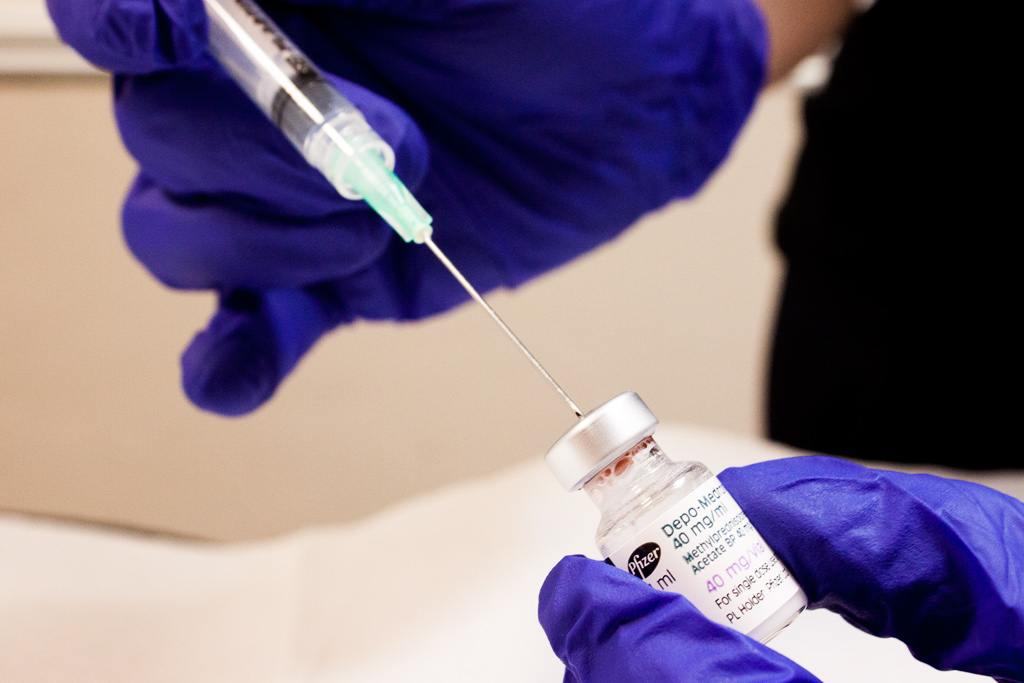
Corticosteroid is a naturally occurring hormone within the body. It is a powerful anti-inflammatory and is very effective at reducing the pain of inflamed areas. Many people associate corticosteroids with only short-term relief and there are many negative reports in the media regarding steroids. There are some truths in this, however when used correctly in small doses they often provide fast-acting long-term solutions for many conditions. In particular corticosteroids are excellent for:
- Wrist Pain
- Elbow Pain
- Osteoarthritis
- Frozen Shoulders
- Rotator Cuff Pain
- Acromioclavicular Joint Pain
- Heel Pain
- Morton’s Neuroma
Please note that ALL of our injections are Ultrasound guided. Research has shown significantly better outcomes when using guided versus unguided injections simply because you can be sure to target the specific injury. We have answered many of your questions:
What is cortisone and how does it work?
Cortisone is the name of a group of medicines that are very strong anti-inflammatories. Corticosteroids are naturally occurring hormones already present within the human body, they are very different to anabolic steroids as used by some bodybuilders. Cortisone can help reduce the pain of a tendon, joint or nerve that is inflamed.
How is cortisone given?
Cortisone can be taken by mouth but an injection is usually more effective as the medication is placed exactly where it is needed, meaning smaller doses can be used. Typically steroids are placed around a chronically inflamed tendon or joint.
What conditions are treated with cortisone?
Most painful tendons can be treated effectively with cortisone injections. Inflammatory joint pain from osteoarthritis can be rapidly reduced with cortisone, as can nerve inflammation such as carpal tunnel syndrome.
Is cortisone a cure or a temporary fix?
Cortisone can be a cure for any pain that is entirely due to an inflamed structure such as frozen shoulder and tenosynovitis.
Cortisone can also be a temporary fix for any pain that is due to a minor injury but the patient is unable to take the required time for the injury to heal itself. For example with Golfers elbow in elite sports players who are required to continue with their sports activities.
How frequently can cortisone be given?
There are no lifetime limits on cortisone injections however expert medical consensus suggests there should be a 3 month gap between the administration of cortisone. Typically if you do require more than 2 cortisone injections then you may be advised to consider other treatment options.
It is important to understand that cortisone is an excellent way to reduce pain quickly in order to engage in a rehabilitation programme, which will provide the long-term solution to most problems.
Will the injection hurt?
Minor discomfort is common however the vast majority of patients report the injection was far less painful than they thought. The use of ultrasound to guide injections helps significantly reduce pain as the target structure can be accurately located with minimal needle movements.
Are there any complications?
Short term: A small number of people will experience a temporary increase in their pain as the cortisone is working. This is nothing to be concerned about and will pass after 24-48 hours.
Long Term: Too many cortisone injections can cause tendon damage or worsening osteoarthritis. If you are concerned about this then your practitioner will be happy to discuss your specific case with you.
Many patients are concerned that steroid injections will make them gain weight. This is extremely unlikely after a corticosteroid injection as the doses are very small in comparison to oral steroids.
What can expect from the Injection?
The cortisone is mixed with a local anaesthetic so you will usually experience a mild numbness and pain relief for a few hours. When the local anaesthetic wears off many people experience a dull ache or throbbing sensation. A small percentage of people will get a temporary increase in their pain; know as a ‘steroid flare’. This is nothing to be concerned about and painkillers such as paracetamol can be used to help calm symptoms, this will settle quickly.
It is often best to consider driving arrangements after an injection as the local anaesthetic can cause some localised numbness, therefore driving may be best avoided.
If you are having a joint injected then it is advised to avoid strenuous activity for at least 2 days. If an inflamed tendon is to be injected then 10-14 days of relative rest from sport activities is recommended.
Cortisone will actively work to reduce your inflammation for 21 days. This means that the benefits of cortisone are seen within 3 weeks. The vast majority of people will start to feel benefits within 7 days after the injection.
When used appropriately cortisone is very effective and safe and has been used for decades in medicine. It is used around the world as one of the most trusted methods to treat a majority of joint, tendon and nerve pain.
FPM response to concern related to the safety of steroids injected as part of pain procedures during the current COVID-19 virus pandemic.